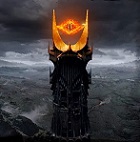loki100
Posts: 10920
Joined: 10/20/2012
From: Utlima Thule
Status: offline

|
T53 - 18-24 June 1942: “Until the Agony”
Slowly the cold of the winter, and the misery of the spring rains seemed like a period of ease as the heat built over central Russia and every movement raised clouds of dust.
At Tula, the Germans carried on with their methodical preparations. They seemed content to launch massive infantry attacks at a few strongpoints, weakening the outer Soviet defensive belt but making no real progress.

(shows the German deployments after I'd finished my reconnaissance and bombing raids)
No one, from the riflemen in the weakened front line to Stavka located at (redacted for security reasons) had any illusion this was because the Germans lacked the determination to prosecute their attack.
In the skies, the air battles continued unabated. If the German fighters were dominant, they were also outnumbered. The result was relatively heavy losses among their bombers and reconnaissance planes. Equally the VVS was able to carry out several massive bombing raids trying to disrupt the German build up of their armoured forces.
However, it was on the Larna sector that the real drama unfolded. While Stavka accepted the need to operate on the strategic defensive in 1942, there was also a view that being too passive would allow the Germans to concentrate on their chosen targets. With what seemed to be 3 Infantry and 2 Panzer Armies around Orel, they had to be weak somewhere else. A renewal of the Rostov battles was considered and rejected for the moment.
The result was the Yaroslav Offensive [1].
Vatutin's NW Front had 2 of the most experienced armies in the Soviet OOB (52 and 55) and 4 Shock was released from Stavka reserve. The goals were the liberation of Kalinin [2] and to inflict heavy losses on the German forces in this sector. At worst, it was hoped to draw off German reserves from their own offensive at Tula.
The extent of the build up and pre-attack preparations had been detected by the Germans but the initial attack still managed a degree of operational surprise.

The initial stage was a renewal of the nightly harassing raids by the U2s on the German infantry dug in along the 40 mile front from the Volga reservoir south of Kalinin to the Senezhkoye reservoir.
This time daylight brought no respite.
6 Air Army, reinforced to almost 900 planes struck again in the morning. A series of raids hammered both the German front line and detected reserve formations on the Larna and at Shkahovskaya.
In confusion as to the actual target, the Germans committed most of 5 Panzer division to try and shore up the lines held by 42 Infantry Corps.
However, they were too late, almost 200,000 men backed by 2,200 guns and yet more ground strikes fell on the 268 Infantry Division. Outnumbered 8-1, and with their reserves and artillery disrupted by the Soviet air attacks, they fell back abandoning their long prepared defensive positions [3].


(Elements of 4 Shock breaching the German defensive lines)
In terms of overall numbers, I have managed to reach my target of 8 million men and am close to 100,000 guns (if there is one thing I have learned from Oshawatt, its that you can never have too many guns). Given the depth of my reserves, I can absorb an awful lot of losses and still recreate my front line armies.

Discussion
Thought it might be useful to use that set piece attack to explore the impact of pre-attack air operations.
I hit the Germans with 2 raids. The first was their usual night time visit by the local U2s.

As you can see, that disrupted 67 elements, mostly various artillery pieces. This was followed in by a large day time raid that disrupted another 57 (most the damage done by the Il-2s). I also bombed one of the potential reserve formations (I hadn't spotted the others)
I then did a pre-attack bombardment from some artillery brigades I raised a while back (this did no damage). The final attack was devastating.

For comparison I then reran that final attack but without the air attacks.

Given the randomness of the combat system, I realise that one instance is not enough, but I think some things are clear. The German base value in the second attack is higher and they have 600 more elements 'ready'. My start numbers are much the same in each case.
Its clear in the second instance the random rolls went in the German favour 450 went to 611 compared to 421-301 and against me 449-745 compared to 448-1267. But, if my CV had only gone to 745 in the first attack, I'd have still won the battle.
Not convincing proof, but enough to convince me that if an attack really matters, ground attacks in advance certainly improve your chances.
[1] – Named after one of the Princes of Tver who managed to rally early Russian resistance to the Mongols. He set in train a series of victories that threatened to reduce Moscow to a secondary power. This did not end well for Tver … after all Ivan the Terrible had to start his career somewhere.
[2] – I'm a little worried at the VP situation and retaking a few cities in the north west may give me some head room to absorb any losses in the south/centre.
[3] – I don't think there is any reason to create a lot of Infantry Corps this early but I wanted some. My view is they are not much use on the defence, as, unless it is a critical location, the Germans can go around them. They are for attacks, and as here, I'd managed to stack the equivalent of 54 CV into 2 hexes, enough to breach a level 3 fort. This also seemed to be the best use of my relatively few Gds Infantry divisions. There is a similar formation in reserve in the South.
_____________________________
|
 Printable Version
Printable Version


















































 New Messages
New Messages No New Messages
No New Messages Hot Topic w/ New Messages
Hot Topic w/ New Messages Hot Topic w/o New Messages
Hot Topic w/o New Messages Locked w/ New Messages
Locked w/ New Messages Locked w/o New Messages
Locked w/o New Messages Post New Thread
Post New Thread